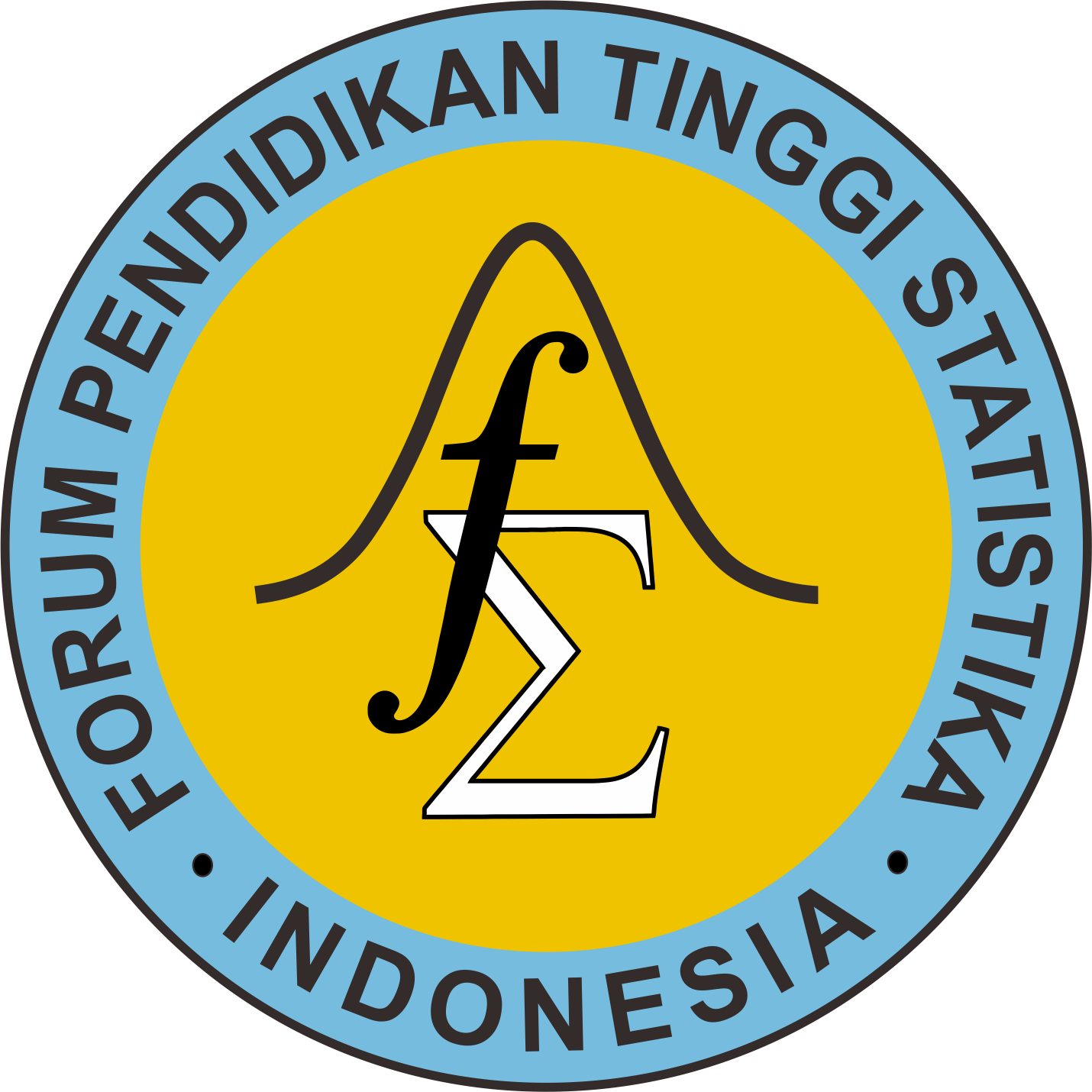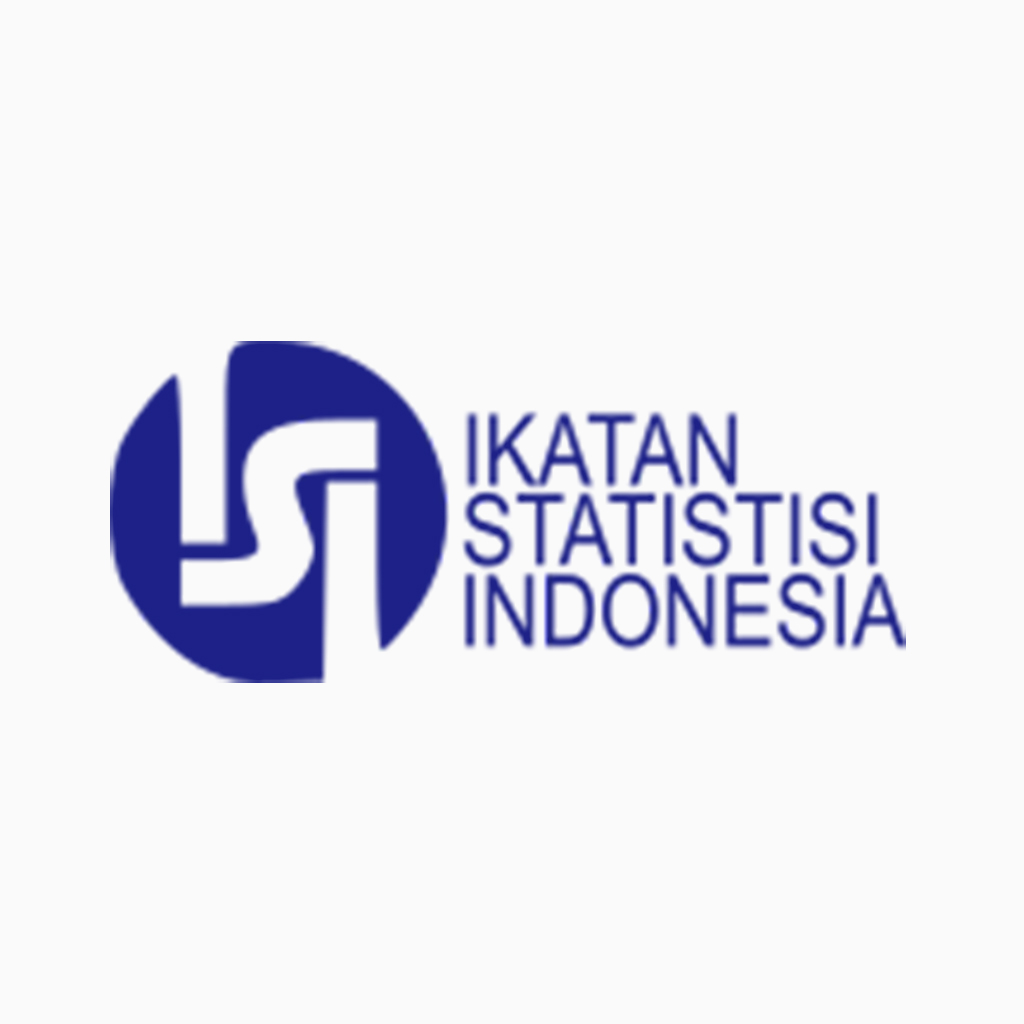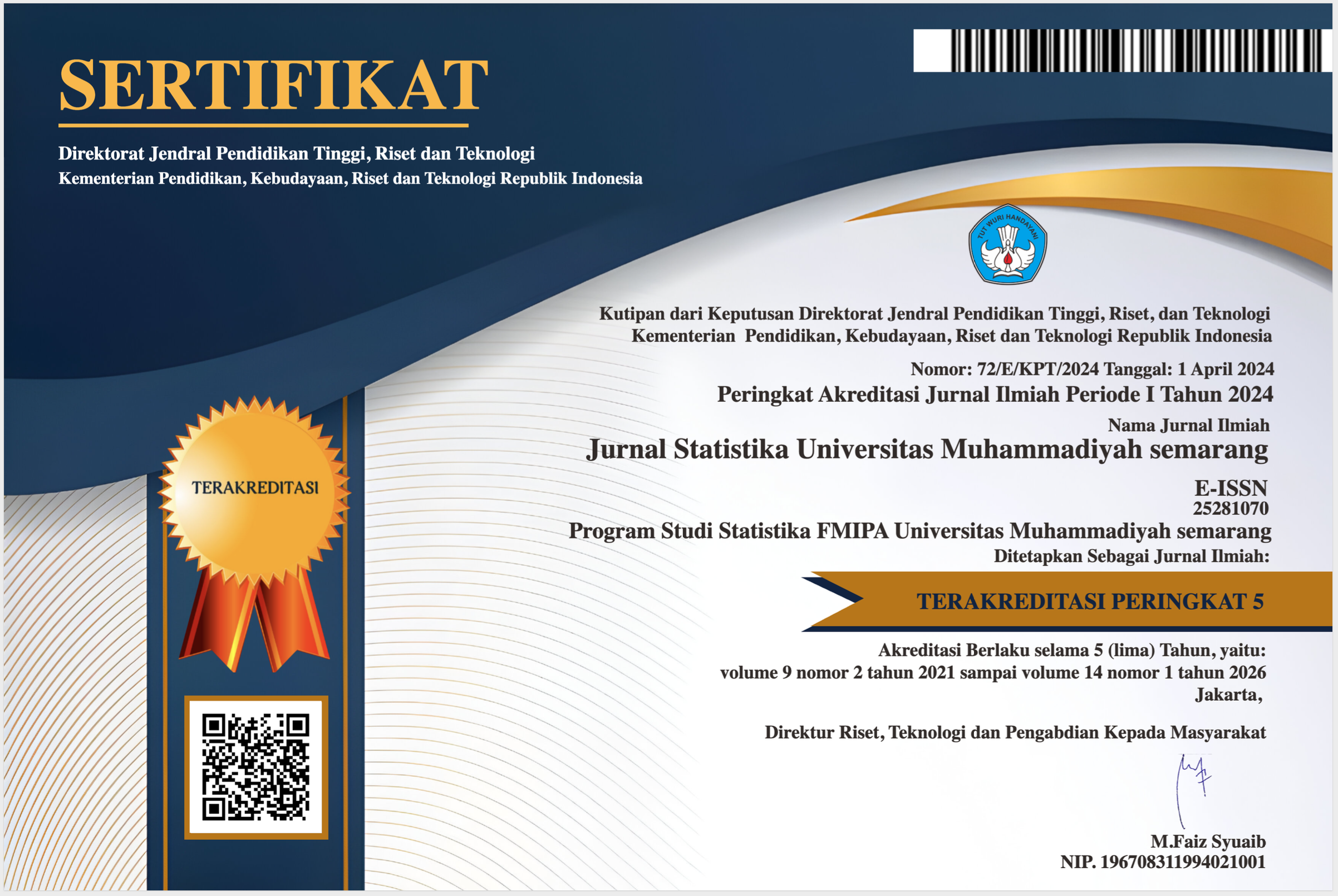MODELING OF FACTORS INFLUENCING GENDER DEVELOPMENT INDEX (GDI) IN PAPUA PROVINCE USING SPLINE NONPARAMETRIC REGRESSION
(1) Statistics Study Program, Department of Statistics, Faculty of Mathematics and Natural Sciences, Pattimura University
(2) Statistics Study Program, Department of Statistics, Faculty of Mathematics and Natural Sciences, Pattimura University
(3) Statistics Study Program, Department of Statistics, Faculty of Mathematics and Natural Sciences, Pattimura University
(*) Corresponding Author
Abstract
Full Text:
PDFReferences
S. Aprilianti and Y. Setiadi, “Faktor-faktor Yang Memengaruhi Indeks Pembangunan Gender di Indonesia Tahun 2020,” in Seminar Nasional Official Statistics, 2022, pp. 245–254.
S. U. R. Sari, “Aplikasi Metode Regresi Nonparametrik Spline Multivariabel untuk Pemodelan Faktor-Faktor yang Mempengaruhi Indeks Pembangunan Gender di Provinsi Jawa Barat,” Jurnal Statistika Universitas Muhammadiyah Semarang, vol. 6, no. 2, 2018.
A. Wahyu, L. Firdauzi, T. Waskita, M. Alfana, A. Pitoyo, and Y. Kusmanto, Analisis Indeks Pembangunan Gender Provinsi Maluku Utara. 2020. doi: 10.13140/RG.2.2.11702.52800.
S. Madrim, “Kekerasan Terhadap Perempuan pada Tahun 2021 Merupakan Tertinggi dalam 10 Tahun Terakhir.” Accessed: May 29, 2023. [Online]. Available: Https://Www.Voaindonesia.Com/A/Kekerasan-Terhadap-Perempuan-Pada-2021-Merupakan-Tertinggi-Dalam-10-Tahun-Terakhir-/6473578.Html
Kementerian Pemberdayaan Perempuan dan Perlindungan Anak, “Pembangunan Manusia Berbasis Gender 2021,” 2021.
Z. D. Rizqiana, “Modelling Gender Development Index in Central Java In 2021 with Geographically Weighted Regression,” Journal of Statistical Methods and Data Science, vol. 1, no. 1, pp. 25–36, 2023.
Suparti, R. Santoso, A. Prahutama, and A. R. Devi, Regresi Nonparametrik. Wade Group, 2018.
F. K. Lembang, V. Y. I. Ilwaru, and N. Lewaherilla, “Pemodelan Regresi Nonparametrik Spline dan Aplikasinya Pada Indeks Kebahagiaan Provinsi Di Indonesia,” Jurnal Riset dan Aplikasi Matematika (JRAM), vol. 7, no. 1, pp. 56–65, 2023.
A. Indrasetianingsih, F. Fitriani, and P. J. Kusuma, “Klasifikasi Indeks Pembangunan Gender Di Indonesia Tahun 2020 Menggunakan Supervised Machine Learning Algorithms,” Inferensi, vol. 4, no. 2, pp. 129–136, 2021.
I. Aryantari, “Pemodelan Indeks Pembangunan Gender (IPG) di Provinsi Jawa Timur Menggunakan Regresi Nonparametrik Spline.” Tugas Akhir. Surabaya: Institut Teknologi Sepuluh Nopember, 2017.
R. L. Eubank, Spline Smoothing and Nonparametric Regression. 1988.
G. Wahba, Spline models for observational data. SIAM, 1990.
I. N. Budiantara, “Model Keluarga Spline Polinomial Truncated dalam Regresi Semiparametrik,” Berkala MIPA, vol. 15, no. 3, pp. 55–61, 2005.
D., N. Gurajati, Basic Econometrics, Fourth. Singapore: McGraw-Hill Inc., 2004.
Samin. Radjid, “Pemodelan Prevalensi Balita Stunting Dengan Mengunakan Metode Regresi Nonparametrik Spline (Studi Kasus: Provinsi Maluku, Maluku Utara Dan Papua Tahun 2021),” Skripsi, Universitas Pattimmura, Ambon, 2022.
Article Metrics
Abstract view : 144 timesPDF - 31 times
DOI: https://doi.org/10.26714/jsunimus.12.2.2024.29-41
Refbacks
- There are currently no refbacks.
Copyright (c) 2024 Jurnal Statistika Universitas Muhammadiyah Semarang
Editorial Office:
Department of Statistics
Faculty Of Mathematics And Natural Sciences
Universitas Muhammadiyah Semarang
Jl. Kedungmundu No. 18 Semarang Indonesia
Published by:
Department of Statistics Universitas Muhammadiyah Semarang
This work is licensed under a Creative Commons Attribution 4.0 International License








2.png)



